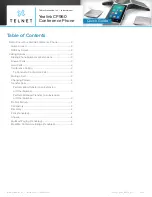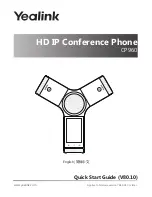
teenagers using wireless Tablet PCs. Reducing the time of wireless Tablet PC use
and increasing the distance between the user and the RF source will reduce RF
exposure.
Some groups sponsored by other national governments have advised that children
be discouraged from using wireless Tablet PCs at all. For example, the government
in the United Kingdom distributed leaflets containing such a recommendation in
December 2000. They noted that no evidence exists that using a wireless Tablet PC
causes brain tumors or other ill effects. Their recommendation to limit wireless Tablet
PC use by children was strictly precautionary; it was not based on scientific evidence
that any health hazard exists.
Do hands-free kits for wireless Tablet PCs reduce risks from exposure to RF
emissions?
Since there are no known risks from exposure to RF emissions from wireless Tablet
PCs, there is no reason to believe that hands-free kits reduce risks. Hands-free kits
can be used with wireless Tablet PCs for convenience and comfort. These systems
reduce the absorption of RF energy in the head because the Tablet PC, which is the
source of the RF emissions, will not be placed against the head. On the other hand,
if the Tablet PC is mounted against the waist or other part of the body during use,
then that part of the body will absorb more RF energy. Wireless Tablet PCs
marketed in the U.S. are required to meet safety requirements regardless of whether
they are used against the head or against the body. Either configuration should
result in compliance with the safety limit.
Do wireless Tablet PC accessories that claim to shield the head from RF
radiation work?
Since there are no known risks from exposure to RF emissions from wireless Tablet
PCs, there is no reason to believe that accessories that claim to shield the head from
those emissions reduce risks. Some products that claim to shield the user from RF
absorption use special Tablet PC cases, while others involve nothing more than a
metallic accessory attached to the Tablet PC. Studies have shown that these
products generally do not work as advertised. Unlike “hand-free” kits, these so-called
“shields” may interfere with proper operation of the Tablet PC. The Tablet PC may
be forced to boost its power to compensate, leading to an increase in RF absorption.
In February 2002, the Federal trade Commission (FTC) charged two companies that
sold devices that claimed to protect wireless Tablet PC users from radiation with
making false and unsubstantiated claims. According to FTC, these defendants
lacked a reasonable basis to substantiate their claim.
What about wireless Tablet PC interference with medical equipment?
Radio frequency energy (RF) from wireless Tablet PCs can interact with some
electronic devices. For this reason, FDA helped develop a detailed test method to
measure electromagnetic interference (EMI) of implanted cardiac pacemakers and
defibrillators from wireless teleTablet PCs. This test method is now part of a standard
sponsored by the Association for the Advancement of Medical instrumentation
(AAMI). The final draft, a joint effort by FDA, medical device manufacturers, and
many other groups, was completed in late 2000. This standard will allow
manufacturers to ensure that cardiac pacemakers and defibrillators are safe from
wireless Tablet PC EMI. FDA has tested wireless Tablet PCs and helped develop a
voluntary standard sponsored by the Institute of Electrical and Electronic Engineers
(IEEE). This standard specifies test methods and performance requirements for












































